#matrix defination
Explore tagged Tumblr posts
Text
the way I see it (or the way I'd like to see it written) megatron is fundamentally incorrect in treating optimus as if he is a completely different entity from orion pax, but megatron also isn't stupid. how do you square those two facts? optimus really isn't helping his own case - being prime really did change him, not as literally as megatron thinks, but it is difficult to see your former friend in someone who has ceased acting like a person. see, selflessness might have always been a part of orion, but optimus feels obligated to ramp it up to a pathological degree, proportionally (in his opinion) to the amount of responsibility he has. to him it's the most obvious thing in the world, so he never lets his guard down and never explains it. but, and here's the thing, to megatron self-preservation and self-respect are markers of personhood (which he has had to viciously defend). so of course, looking at optimus 'sacrifice for the greater good' prime he would only see some creepy drone that doesn't think for itself and about itself.
#and this also goes for their relationship because optimus insists on making the war impersonal#that's what a responsible leader would do - the moment he accepts the matrix he stops thinking about what he wants or fears#so it is a Kind of death but one that He willingly chose as an extension of a worldview he had already held as orion#meanwhile megatron's entire life has been defined by fighting for the very right to live and be a person#he cannot imagine relinquishing who he is or what he wants because keeping true to those things is the Entire Point to him#does this mean he lacks bigger picture perspective? yes#does this mean that optimus is a hypocrite? also yes#I HATE them. whens the wedding#transformers#megop
96 notes
·
View notes
Text
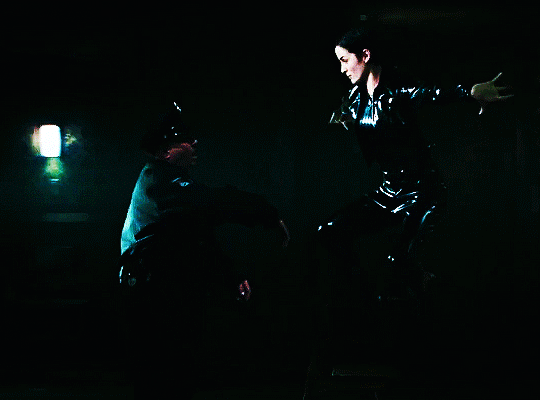

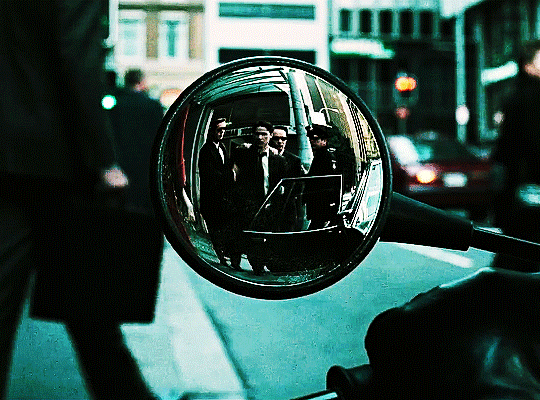

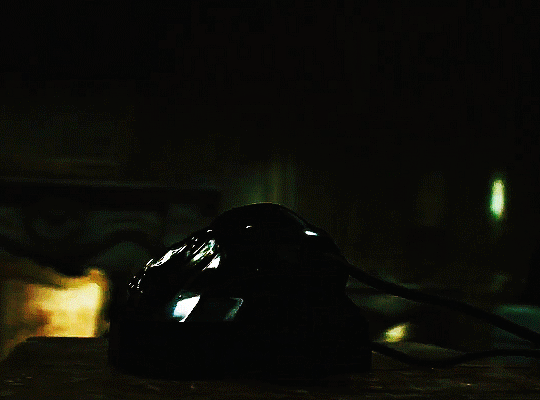
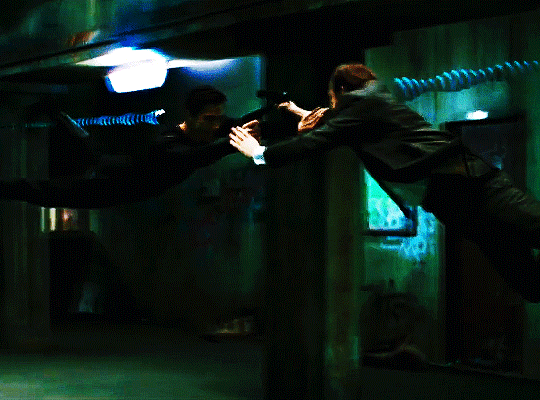
What is real? How do you define 'real'? If you're talking about what you can feel, what you can smell, what you can taste and see, then 'real' is simply electrical signals interpreted by your brain. The Matrix (1999) dir. by the Wachowskis
#the matrix#neo#trinity#thematrixedit#scifiedit#filmedit#90sedit#creations#anja#cinematv#dailyflicks#filmtvcentral#filmtvtoday#junkfooddaily#useranimusvox#userrobin#usersugar#userdiana#userteri#usersameera#usermichi#userkayleigh#userlenny#userconstance#userbeckett#userrlaura#userallisyn#userkd#useradie#tuserpris
2K notes
·
View notes
Text
Thinking About Gender Performance via Eliot in Leverage...
I adore how this show comments on masculinity with Eliot, and the shootout in The Big Band Job represents that perfectly. Eliot doesn’t use guns. We know he can, that’s never been a question, he’s career military until whatever shattered his illusions with that career (I don’t know if we find out, I haven’t finished the series yet). I didn’t want to really comment until I finished the series, but it’s too much of a standout not to comment. In most shows, Eliot would be armed at all times. It would become a running gag how constantly and thoroughly he is armed. He would have to disarm and pull out an inexplicable number of weapons, like Aragorn in The Two Towers or Inej in Shadow and Bone. Alternately, he might become a true pacifist—think Shepherd Book in Firefly. That’s the usual portrayal of a gunman who’s turned his back on guns. Instead, Eliot doesn’t, can’t walk away from that life. So he stays in it without relying on the easy solution. He’s a stone-cold badass because of what he can do unarmed, or scavenge-armed with a shovel or chair or whatever’s on hand. So why do I keep coming back to the scene where Eliot picks up a gun? Where he behaves like the cowboy I’ve seen a thousand different times in a thousand different media? Because the second the camera panned to the gun, my stomach clenched, because this wasn’t about how cool an outlaw is. It was about all the trauma Eliot can barely keep to a simmer that he was about to face head-on because he is still, above all, beholden to and defined by duty. And the way that scene is framed is so, so, so cool. It evokes cowboys and action heroes and The Matrix. The violence is justified: these are bad guys and Eliot is saving Nate. We literally see a handgun jammed down the front of Eliot’s trousers—he has, in the cultural parlance, reclaimed his masculinity. And that’s the toxic masculinity. The soldier. The cowboy. The myth of those roles without the hard work and dirt and early mornings. The cowboy without hardscrabble, the soldier without blood. We know Eliot can step into either role. He is, capital-a capital-m, A Man. And that scene is so, so, so cool. I can’t stop thinking about it. If it were in most shows, it wouldn’t stay with me the same way. It would be heroic and triumphant. In Leverage, what defines that scene? “They don’t need to know what I did.” It's shame. It’s a reminder that no matter how cool and justified and cowboy, this wasn’t the time Eliot took out a bunker full of mooks. This was when Eliot was pushed into such a narrow corner he defied his principles. He broke the rule that keeps everything in check. I don’t leave this episode feeling like Eliot’s a badass. Eliot’s always been a badass. I leave the episode remembering how deeply shattered this character is. In conclusion, no other show does it like Leverage, this is good stuff right here and I’m so glad I found it!
976 notes
·
View notes
Text
youtube
Join Dr. Berry on an empowering quest for equity and inclusivity in education! This episode is packed with insights for parents, caregivers, educators, and leaders to drive positive change in their local schools. Unveil the innovative Equity Maturity Matrix to gauge your school or district's progress on the equity scale. Embrace growth and make a meaningful impact together! Watch video now.
#Equity Unleashed: Transforming Education with the Equity Maturity Matrix#equitymaturitymatrix#Equity Maturity Matrix#MaturityMatrix#Maturity Matrix#EquityInEducation#EquityScale#equity education#EquityinEducation#Empower parents and educators#Empowering leaders in education#equity in education defined#Equity and inclusivity in education#Transformative journey in education#Youtube
0 notes
Text


A FOSSIL GINKGO LEAF Colorado, USA
From the Paleocene (circa 58 - 55 million years ago) the clearly defined 31⁄4-inch wide Ginkgo cranei with well preserved striations, on original matrix. Reverse of matrix three further partial specimens of Ginkgo cranei.
63⁄4 x 67⁄8 x 3⁄4in. (17.1 x 17.5 x 1.9cm.).
#A FOSSIL GINKGO LEAF#colorado#paleocene period#ginkgo cranei#fossils#archeology#archeolgst#history#history news#ancient artifacts#nature
9K notes
·
View notes
Text
ACTUALLY speaking of the intricacies of rodimus story and character. i need to make you all eat cardboard w me.
i was thinking the other day abt how the main thing that defines rodimus all the way throughout mtmte/ll is how he is always so overwhelmingly ready to give someone a second chance. he introduces the reintegration act for drift. he lets cyclonus be a part of his crew even though its strongly advised against. when he cures the members of his crew who mutinied from being sparkeaters he says "obviously youre forgiven". megatron, scourge of the fucking galaxy, is given another chance to be good under rodimus' watch. he even spares fucking getaway, in a moment that literally REVEALS his TRUE COLORS
and i was thinking about how like. of course he would do that. he was given a second chance himself. the matrix saved his life, the most important spiritual artifact his race has, and he was a nobody from a poor town so awful it was a breeding ground for decepticon sentiment, and he had to destroy that town with his own two hands and charges he rigged. its no wonder he thinks everyone must deserve it, a second chance to be better than they were.
its also no wonder he feels like he has to prove himself or live up to some mythical idea of what a prime is or he doesnt deserve it, doesnt deserve the chance he was given. and man. i literally just want to tell him that hes so . he doesnt have to be optimus or anyone else . hes his best when hes himself because who he is is so genuinely good and warm and fun and the crew he has couldnt have come together as a family being led by anyone else. and it makes his "you may not be good but you are good enough" speech that ties together the whole comic so well even more resonant bc he is also saying this about himself. his arc is about realizing that hes good enough. sobbing on the floor
#💖🔥#idw rodimus#mtmte spoilers#ll spoilers#does it matter to tag those. idk#but like. god. i love him#and this doesnt even bring up how his obvious adhd works into all this !!!!!!!!!!!!!!!!! augh i could be here forever#if this is formatted weird its bc its stuff ive said on discord that i pasted here bc its still on my mind. all the time
643 notes
·
View notes
Text
Writing Guide: Character Development

Physical Description Template
Name:
Age:
Height:
Gender:
Sexuality:
Nationality:
Ethnicity:
General health:
Physical description (e.g., face, hair, body):
Clothing preferences:
Job/s:
Likes:
Dislikes:
Relationship status:
Any unusual traits or habits?
Backstory Template
Where were they born?
Where do they live?
As a child, what did they want to be when they grew up?
What do they actually do?
What gets them out of bed in the morning?
Are their parents still alive?
What is their social class?
Where do they like to socialise?
What is the defining moment of their life so far?
What is their greatest fear?
What’s the biggest lie they’ve told?
Are they religious?
Cat person or dog person?
Behaviour Matrix
Instead of creating detailed character profiles, you may consider making behaviour matrices instead.
Example
Selfish — Altruistic
Aggressive — Passive
Dishonourable — Honourable
Disordered — Ordered
Believer — Sceptic
Fervent — Restrained
Apathetic — Inquisitive
How to use this matrix:
For each row, pick from one of the columns.
This defines your character based on attitude and response, and avoids injecting any kind of ethical commentary.
These attributes are not inherently good or bad and, when combined, form a surprisingly nuanced sense of who the person is and how they might react to any given situation.
Even better, this behaviour matrix also allows for and actively encourages contradictions, which are the foundation of any interesting character.
Source ⚜ More: Worksheets & Templates ⚜ Writing Resources PDFs Plot ⚜ Character ⚜ Worldbuilding ⚜ Tips & Advice
#character development#writing tips#writing reference#spilled ink#on writing#dark academia#writeblr#writing prompt#fiction#creative writing#character building#literature#writers on tumblr#hans andersen brendekilde#writing resources
425 notes
·
View notes
Text
Module
Abstract Algebra
Let R be a ring, then a left R-module, M is an Abelian group (M,+) along with an operation ·:R×M->M such that for all r,s∈R and x,y∈M we have
r·(x+y)=r·x+r·y,
(r+s)·x=r·x+s·x
(r·s)·x=r·(s·x)
1·x=x
+ is called addition and · is called scalar multiplication
trying to learn tech is so fucking hard there's so much jargon. "what gooble are you using" "what's a gooble" "you use the gooble to respink your matrix" "what does respink mean and what is a matrix" "respinking means unpiling a component to change it back to its base spink. a matrix connects your device's AKD to your networks z jamper" how does anyone understand any of this
#matrices with elements from a ring R with matrix addition and scalar multiplication defined by component-wise left multiplication#definition#abstract algebra
2K notes
·
View notes
Text
So my home ttrpg group is between longform games right now, and I have been planning to bring a bunch of games to them this weekend as options for what we might play next. However, I have been trying to figure out how to talk about the games in a way that doesn't rely as much on me explaining the vibes to them.
I know that people have a bunch of qualitative categories for how they explain games, but I find the idea of saying things like Dark Fantasy OSR, or Lesbian Goofball PBTA less helpful when talking about how games actually play, especially when two games in the same category are like, wildly different in the way they use their frameworks.
So I invented a 6 axis, 1 to 5 star rating scale for TTRPGs that you are free to borrow when talking to groups, or whatever.
TTRPG 5 Star Rating Matrix
Width
What is the scope of this game? Is it narrowly about one thing or does it encompass many types of play? (Credit to friend of the blog @ostermad-blog for this one, they came up with it from my draft)
Weight
How much cognitive load does the player need to bear? Do rules often need to be referenced verbatim? Can those rules fit on a handout?
Wargame
Is the player expected to apply tactical acumen? Is movement tracked tightly or loosely? Does a bad build punish a player?
Writers Room
How much are players expected to make narrative choices and drive the story without the rules scaffolding them? Does this game fall apart without excellent improvisational storytellers?
(Prep)Work
Does this game require a lot of pre-planning by the facilitator? Are there intricate systems to attend to outside of table play? Can I put in the same amount of time as other players and still have everyone leave happy?
Whimsy
Expected tone of the game. Does this game have difficult thematic elements baked in? Is the core subject or role in the game high or low risk?
Here are some games I know well and how I calibrated them:

I have breakdowns of what each star rating means below the cut if you're curious. Happy Gaming!
Width
⭐ - As written, the game has basically one mode of play, or one thematic core that it meditates on. May have phases, but textural difference is minimal.
⭐⭐ - As written, there are at least two modes of play, but the scope of that play is highly thematically focused or highly dependent on using the game’s own lore. Might have only one kind of character (e.g. Mech Pilot) that it supports. Has limited tools outside of the primary mode of play.
⭐⭐⭐ - Has a variety of modes of play, but may be rigid in their execution. Might encompass multiple kinds of characters (e.g. Doctor, Lawyer, fighter) or character options. The narratives that this game tells within its setting are narrowed, a three word description tells you what kind of stories it can tell with consistency.
⭐⭐⭐⭐ - Loose framework, but with some kind of thematic grounding. Describing the framework in 3 words doesn’t tell you the kind of stories that the game tells (e.g. Dark Fantasy, Star Wars Romp).
⭐⭐⭐⭐⭐- As written, this game is designed in such a way that it doesn’t put specific limits on what sorts of stories that it is meant to tell. It might ask players to define abilities or stats for themselves. The Facilitator is going to pitch a thematic grounding on top of the rules set.
One Star Examples: For the Queen, Dialect, Honey Heist Five Star Examples: Fate Core, Savage Worlds, GURPS
Weight
⭐ - It is reasonable for a player to be able to recite the rules from memory. The game may be prompt based, or driven by a flow of rules that are read aloud as played.
⭐⭐ - Players can hold most of the most important information about the game in their heads, with a page or less of rules reference needed to play smoothly. This reference could all fit neatly on the character sheet if one is present.
⭐⭐⭐ - Everything a player needs to know about the game is visible on less than 3 sheets of reference. Players are more or less expected to know exactly how their own abilities work in precise detail, and are unlikely to make a mistake in executing them.
⭐⭐⭐⭐ - Players make extensive use of multiple reference sheets to keep rules moving smoothly. No external tools are needed, but players memorizing the details of all of their abilities is taxing.
⭐⭐⭐⭐⭐- Players and facilitators will prefer to make extensive use of external tools or reference to keep play moving smoothly. Expecting a player to have the exact details of their abilities memorized is not reasonable.
One Star Examples: For the Queen, Stewpot, Mobile Frame Zero: Firebrands Five Star Examples: Dungeons and Dragons 3-5e, Lancer, Edge of the Empire
Wargame
⭐ - As written, this game does not treat combat as mechanically different from any other aspect of play, or does not include narrative violence at all.
⭐⭐ - While players may engage in combat, it is minimally different from regular play. There may be tools or abilities for players to use to conduct a fight, but the texture of those fights is thematic, not mechanical. Narrative and consequence drive the action, not hit points.
⭐⭐⭐ - As written, combat has its own set of rules. This game may have some elements of buildcrafting, but either it is difficult to build something that doesn’t work, or the player may meaningfully invest in other modes of play and still find a commensurate level of satisfaction. If combat occurs, spacing is kept in mind, but is tracked in relative terms (range bands) or highly simplified (zone based combat).
⭐⭐⭐⭐ - This game has buildcrafting that is somewhat mandatory if players wish to survive a fight, but there is still a meaningful choice in choosing a non-combat role. It may use a grid or a spacing system to help players visualize the combat. Fights are driven by mechanics, not by narrative.
⭐⭐⭐⭐⭐- To enjoy this game, players must spend time buildcrafting. If a player’s build is suboptimal, there may be significant parts of the intended experience that will either feel tedious, or that the player will not have meaningful access to. This game is played on a grid.
One Star Examples: Wanderhome, Dialect, Belonging Outside Belonging Five Star Examples: Lancer, Dungeons and Dragons 3-5e, Valor
Writers Room
⭐ - Players in this game are not expected to provide much in the way of narrative substance. Story is something that is driven by external input or tools, and players are there to imagine and react. The player need not separate the self from the character they play in any meaningful way.
⭐⭐ - The mechanics of this game drive most of the narrative, or else the narrative is set for the players by an external source or player. Players are encouraged to play optimally rather than dramatically, but do have room for expressing the identity of their character within the game’s mechanical frameworks.
⭐⭐⭐ - While the game does provide strong scaffolding to tell a story, the players present are expected to drive the story within those frameworks. The game’s systems create and resolve conflict on their own, but works best when the players are willing to choose the dramatically interesting option even if it mechanically non-optimal.
⭐⭐⭐⭐ - The game provides some mechanical tools that create and resolve drama, but there is a significant expectation that the players are buying into and driving the game’s thematic concepts. Players are the ones deciding what the scenes should be and when to end them, but mechanics still help determine outcomes.
⭐⭐⭐⭐⭐- The players are expected to drive the narrative at all times. Tools for deciding what scenes to do and when to end them are limited, optional, or vague. There is no meaningful scaffolding that creates conflict or resolution, it is incumbent on those present to manifest those things.
One Star Examples: Alice is Missing, Ribbon Drive, For the Queen Five Star Examples: Wanderhome, Systemless RP
(Prep)Work
⭐ - Facilitators are not expected to do work outside the time at the table. All rules can be read while the game is played. No memorization is needed.
⭐⭐ - This game expects the facilitator to have read the rules in advance, but the rules are so few that they can be run from a single reference sheet. At times, the facilitator must think about and potentially advance and adjust the narrative of the game behind the scenes. Prep is qualitative; answering questions about where the narrative is going to go, who will be there etc. The game can be run smoothly predominantly as improv.
⭐⭐⭐ - This game expects the facilitator to not only know the rules, but to imagine scenarios where the group must play. However, the scope of the scenario design is limited and qualitative. It takes a bit of pondering and perhaps a sketch and a few words of notes. Alternatively, the facilitator must design simple foes or track a simple background system. The work is trivial, and can be done with a bit of time before session.
⭐⭐⭐⭐ - The facilitator of this game is expected to have run systems between games, or created usable maps or scenarios. Generally, games at this level have some reduced wargaming component. The facilitator might need to engage in enemy design, but the work is limited or imminently reusable. The work is non-trivial, and failing to do it will somewhat impact the quality of play.
⭐⭐⭐⭐⭐- The facilitator of this game puts in significant time between sessions engaging in game design activities. They are expected to plan narratives, write NPCs, draw maps, run significant background systems, and design enemies and combat encounters. The work is significant outside of play, and failing to do it beforehand will result in a worse table experience.
One Star Examples: For the Queen, Alley-Oop, Lasers and Feelings Five Star Examples: Lancer, D&D 3-5e, Stars Without Number, Edge of the Empire
Whimsy
⭐ - This game’s thematic core is considered dark, taboo, or difficult, and separating the game’s mechanical features from this subject matter is next to impossible. Games with horror elements almost certainly fit within this category. These games encourage extensive pre-play safety talks.
⭐⭐ - This game is designed to look at dark subject matter, but doesn’t expect the player to spend all of their time there. Players explore difficult topics, but may get to choose what topics to explore, or when to explore them. Games with political messaging/commentary tend to fit this category. These games encourage pre-play safety talks.
⭐⭐⭐ - This game may have dark aesthetics, but doesn’t enforce them mechanically. Alternatively, there are mechanics that address difficult topics in broad strokes, but players are given leeway in the rules with how any difficult topics are approached. These games may encourage safety talks.
⭐⭐⭐⭐ - This game may have the option to explore dark topics, but none of the mechanics are tied to such topics. This game may have violence in its aesthetics, but players may choose to adjust the aesthetics at the table to suit their comfort. These games tend not to talk about safety in their text.
⭐⭐⭐⭐⭐- This game is designed to focus on thematic material that is considered to be relatively safe. The game is unlikely to tread into violence or trauma without effort.
One Star Examples: Trophy Dark, Dungeon Bitches, Vampire the Masquerade Five Star Examples: Honey Heist, Princess World, Beach Episode
The system here isn't about what's good or bad, to be clear. I think there are good and bad games at every level of these categories, but when I think about what my game group is good at and comfy with, I don't think we go in for things at like the 5 end of the Writers Room scale. It's too much work, and most of them aren't pro improvisers.
Similarly, if we play another game that is a 4 or 5 on the PrepWork category, I don't have time to run it these days. So this helps me make practical choices about our next game.
#ttrpg#indie ttrpg#game design#dnd#ttrpgs#ttrpg design#d&d#lancer rpg#steal this#safety tools#five star ttrpg matrix
554 notes
·
View notes
Text
The Punk-Factor of Punkpunk Genre
So, when I posted my history of Solarpunk, someone (probably not in good faith) asked: “So, what about the punk in all the other punk genres?!” towards my request to put the punk back into Solarpunk. And given that my autistic brain obviously cannot just let that stand… You know what? Let me talk about the other punk genre and in how far they are “punk”. I tried to be as exhaustive as possible, though there is a good chance, that I might have missed some of the punkpunk genre. So feel free to add.
Trying to judge the punkiness I do not assume punk as simple counter culture, but a specific ideology. Quote from Wikipedia:
[Punk ideology] is primarily concerned with concepts such as mutual aid, against selling out, hierarchy, white supremacy, authoritarianism, anti-consumerism, anti-corporatism, anti-war, imperialism, conservatism, anti-globalization, gentrification, anti-racism, anti-sexism, class and classism, gender equality, racial equality, eugenics, animal rights, free-thought and non-conformity
Most of the artwork here has been taken from concept art of either of the examples listed.
Sorted from most futuristic to pre(historic). Yes, the list is long.

Cyberpunk
We start with the OG punk genre, the one after which all other punk genre were named. Yes, you could argue that in fact the two genre following are more futuristic – but Cyberpunk kinda just had to start the list.
As a genre: Given that Cyberpunk had its start completely in literature it is the best defined in this regard. Taking place in a late stage capitalist dystopian world in which most is owned by megacorps who don’t follow anyone’s laws but their own, the protagonists usually are social outcasts fighting against their own oppression, trying to keep themselves alive in a world hostile to them. With cybernetics always being a core of the genre, it also tends to deal with the question of humanity in a “ship of Theseus” sort of way. How much can the human body be altered, before the human vanishes?
As an aesthetic: Cyberpunk is the most punk in terms of aesthetics, really. There is a lot of punk and grunge going on in terms of character design. Neon hair colors, fishnets and thorn up jeans jackets can be found here. As well as of course cybernetics on the characters. The world usually is a megacity with a stark divide between rich and poor, tons of neon signs, a slight Japanese influence, flying cars and somehow a constant downpour of rain.
Punk-Factor: Cyberpunk is the one punk genre, where the “punk” was chosen very knowingly as a name. Usually the protagonists are “punks” fighting for their place in the world against a suppressive capitalist system. (Also, they usually fit the punk aesthetic, if they don’t wear leather dusters.) It should be noted however, that especially in newer western Cyberpunk often the punkiness vanishes more and more – for the same reason we have so little Solarpunk: media that outright confronts the problems of capitalism is just less supported.
Examples: Neuromancer (1984), Mirrorshades: The Cyberpunk Anthology (1986), Snow Crash (1992), The Matrix (1999), Dredd (2012)

Biopunk
As a genre: As a genre biopunk is still fairly ill defined, as it mostly shows up as a subsection of Cyberpunk. Rather than the characters having cybernetic implants (or additionally to it) they are augmented on a genetic level. This can be all sorts of augmentations, changing anything from appearance to giving characters higher strength and agility, giving them claws or night vision, or in some cases even “magic” powers. Usually the genre tends to be set in worlds similar to Cyberpunk. In fact it might well be set in a cyberpunk world, only that characters with bioaugmentations exist parallel to those with cybernetics. Additionally, though, there is a subsection of this genre, that concerns reproductive rights.
As an aesthetic: Ironically biopunk is even less defined as an aesthetic. There is not a lot of biopunk art out there and most that exists can go in different directions. As such it often mixes elements from other punk aesthetics – like Cyberpunk, Steampunk or Dieselpunk – with an assortment of bodyhorror elements.
Punk-Factor: It is hard to define the “punkiness” of a genre, that barely exists for the most part. Usually, when it is set against a Cyberpunk backdrop, it might be very punky, but in other settings those punk elements vanish.
Examples: Ribofunk (1995), Altered Carbon (2002), Bioshock (2007), The Windup Girl (2009)

Nanopunk
As a genre: Like Biopunk Nanopunk mostly exists as a subsubgenre to Cyberpunk, often being set in a mostly Cyberpunk world, only that instead of or additionally to Cybernetics, the technology used to alter the human body is nanites. These serve the same function as the genetic manipulation in Biopunk, giving the human in question more strength and agility and at times more or less magical abilities. There is one common plot that comes up again and again, with an AI or megacorp turning the nanites against the people they inhabit or trying to control them.
As an aesthetic: Aesthetically Nanopunk does not have much in terms of its own identity. Most artworks relating to Nanopunk feature a similar aesthetic to Cyberpunk, with megacities and lots of neon.
Punk-Factor: This genre is so small, that it is kinda hard to judge the exact punkiness.
Examples: The Diamond Age (1995), Prey (2002)

Solarpunk
As a genre: Being another genre, that started as such, Solarpunk is a bit better defined. Solarpunk usually takes place in a world post-strive. It is post-capitalist and decolonial in its settings, usually featuring a world that has either formed against the backdrop of preventing climate collapse or in the aftermath of it. A lot of it features people rebuilding – or alternatively building communities. It always features elements about living in harmony with nature or trying to do so. So far, the genre is mostly defined by short stories, partly because there is still disagreements within the movement, how far a conflict can be taken to still qualify as Solarpunk.
As an aesthetic: Solarpunk has a very strong aesthetic definition, mostly featuring all sorts of cities and urban areas, that incorporate natural elements into the urbanity, with greenery growing on roofs and concrete car-centric streets being replaced with more natural, walkable areas. The character design aesthetic is not quite as clearly defined, but usually features natural materials and patterns usually seen within indigenous art.
Punk-Factor: Contrary to what many say, Solarpunk is fairly punk, as it very much embraces the entire anti-hierarchical, anti-capitalist mentality. With the big difference, that the punk mentality is no longer counter culture, but the mainstream culture.
Examples: The Dispossessed (1974), Nausicaä (1984), Laputa – Castle in the Sky (1986), Princess Mononoke (1997), The Summer Prince (2013)

Lunarpunk
As a genre: Lunarpunk is pretty much a subsubgenre of Solarpunk, just as Nanopunk and Biopunk are sprung off from Cyberpunk. It is so far ill-defined as a genre, but the general consensus is, that it is set in solarpunk-esque worlds, but with a heavier focus on mysticism or spiritualism, at times outright including magic. It also tends to feature a lot darker places, being set in underwater or underground settings – or alternatively at night.
As an aesthetic: Lunarpunk is far more of an aesthetic than a genre so far. It features dark places, often with bioluminescent elements in it. Often featuring a mixture of black and dark blue with lighter blue, violet or light green elements shining in the middle of it. Mushrooms – especially glowing mushrooms – feature repeatedly in artwork.
Punk-Factor: Given that Lunarpunk is barely defined as a genre it is hard to estimate the punkiness in it. If it gets more stories, will those still feature the anti-capitalist and anti-hierarchical messaging we see in Solarpunk? This should be the defining factor. Some of the artworks use little aesthetics from the punk scene, but nothing much more.
Examples: Bioluminescent: A Lunarpunk Anthology (2023)

Hopepunk
Honestly, I had no idea where to put this one, given that it might technically be set at any time and place.
As a genre: Hopepunk is very much a genre, not an aesthetic. It has been defined as the opposite of grimdark by its “inventor/name-giver” Alexandra Rowland. The basic idea is to create fiction that instead of taking a dystopian, defeatist and violent approach, takes one defined by hope and to some degree pacifism. As such the genre can be set in any setting, real or fantastic. It mostly is defined by the protagonists taking opposition to cruelty and violence, fighting for a better world and, crucially, also partly archiving it. Other than in usual Cyberpunk, where the best possible ending, tends to be, that the protagonists get to live a somewhat better life themselves, Hopepunk aims to better the life at least for groups of people.
As an aesthetic: Being fully a genre, Hopepunk has no aesthetic associated with it.
Punk-Factor: Hopepunk is punk less in the sense of the protagonists or things happening within the story, which might or might not be punk, but was named such rather because it is considered counter cultural towards the gross of media at the moment, that often strives for a “realistic, gritty, grimdark” outlook on the world. Basically it is saying: “Hope is punk.” I will not make any judgement on whether or not this is true.
Examples: The Long Way to a Small, Angry Planet (2014), Mad Max: Fury Road (2015), The Good Place (2016)

Mythpunk
As a genre: Another one, that does not really fit into a temporal sorting system, because once again it can be set anywhere between the stone age and the far future. The basic idea is, that the story interweaves postmodern storytelling with elements from mythology or folklore. This can mean mythological, genre-traversing retellings, but it can also mean, that mythology seeps into any given story bit by bit. As such the genre with probably the most media in the subgenre is Urban Fantasy, which often borrows from mythology and incorporates these elements.
As an aesthetic: Mythpunk as an aesthetic is a bit strange. There is definitely a mythpunk aesthetic that exists, often mixing familiar elements with elements from mythology and folklore (at times also including quasi-folkloric works of literature, such as Alice in Wonderland and the Wizard of Oz). Often just a bit dark and twisted.
Punk-Factor: To be perfectly frank, for the most part, there is not a lot of punk to be found in this genre. While there have been definitely punky stories told within the genre, this is more a story decision than something inherent to the genre.
Examples: Pan’s Labyrinth (2006), Over the Garden Wall (2014), Inscryption (2016)

Dustpunk / Rustpunk / Desertpunk
As a genre: Kinda grouping those above all together, because people argue about what they might entail and in some interpretations they kinda are similar: Post-apocalyptic stories set in a world of sand and rust. Often featuring a loner character, having to go up against everyone to ensure his own survival – and at times being forced to learn, that the lonerness might not win him (and most often it is a him) anything.
As an aesthetic: Aesthetically this tends to be very much post-apocalyptic, maybe in some cases with some more classical punk elements added to characters and surroundings.
Punk-Factor: Given that there is neither a system to rage against – nor a new, less hierarchical system – usually there is not that much punk outside of some aesthetic choices. Neither tend those stories go into constructing worlds of mutual aid or working against oppression.
Examples: Anything Mad Max should count for this.

Atompunk
As a genre: Atompunk usually deals with themes connected to the cold war – in some cases directly, in some indirectly. Often it overplays the American ideals that were pushed for during the cold war era and portrays scenarios in which American Exceptionalism slowly reveals itself as the dystopia most punks already know it to be. Outside of this vague idea for the setting, the genre is less described, as there is less of a clear script an Atompunk story might follow. So, little description of who might be the protagonist and what their role is.
As an aesthetic: The aesthetic of Atompunk borrows heavily from the Raygun Gothic aesthetic. So, futurism, as it was imagined in the 1950s and 1960s, with heavy influences from late pulp age science fiction art.
Punk-Factor: The aesthetic in this is definitely not punk. The stories often have some vague punk ideas of recognizing how fucked up the world has become, but given the genre is fairly wide in terms of stories, it is hard to give a definite answer to how “punk” it is. One can definitely tell punk stories within this genre, though.
Examples: Hitchhiker's Guide To The Galaxy (1978), Fallout (1997), Futurama (1999)

Dieselpunk
As a genre: Dieselpunk is once again an example of “strong aesthetic, but no clear genre identity”. Generally, Dieselpunk is concerned with the interwar period, but might cover either of the world wars. In some cases the genre features alternate timelines, in which one war happened and not the other, or in which another faction won, with the technological development being influenced by this as well. But as a genre it is not much defined. A lot of stories building on Lovecraft’s legacy feature Dieselpunk in some regards. And there is definitely a subsection of Dieselpunk stories centered around “what if Nazis won” or “what if Nazis somehow went underground and did their own technological development after the war”. Also, there are a lot of stories about pilots of war planes in this genre.
As an aesthetic: As an aesthetic Dieselpunk is more clearly defined. A lot of bare metal and the sorts of technology you would expect from this era, often with retro-futurist and art noveau elements in between. A lot of the fashion within the genre is defined by pilot and military clothing of the times, but at times also dipping into “roaring 20s” fashion styles.
Punk-Factor: In this genre I would generally say: “If the story involves punching Nazis, you might get a couple punk points – but otherwise this is not really punk.”
Examples: The Iron Dream (1972), Brazil (1985), Dark City (1998), Iron Sky (2012), Bitter Seeds (2010)

Teslapunk
As a genre: Yet another one of these, that exists mostly as a vague idea, with no clear definition. The basic idea is a world, that works on Tesla’s inventions. And as those of you, who watched Doctor Who, might know, Tesla sorta, kinda already invented the internet or had an idea of what it could be and how it could work. So a Teslapunk world is based in an alternate timeline, but might in fact go into light futurism. There is not much in this genre though with a unique thematic identity, as stories that use Teslapunk as a backdrop rarely have coherent themes.
As an aesthetic: The aesthetic of Teslapunk is basically “Steampunk, but with Tesla-coils and electricity”. Which is not a big surprise given that Tesla came from the same era that would also be the inspiration for Steampunk. So, we have a lot of Victorian fashion, maybe some light augmentation, airships, and – again – all the tesla coils you can muster.
Punk-Factor: As, again, I think punk is more about themes than aesthetic, this is once more not really possible to judge, because there do not seem coherent themes within the genre so far.
Examples: The Prestige (2006), Sherlock Holmes: A Game of Shadows (2011), Bioshock Infinite (2013)

Arcanepunk
Another one of those that do not neatly fit into the timeline…
As a genre: Arcanepunk takes place in a world, where both magic and technology have developed. In some cases both developed side by side, in others, we might have a technological world, that suddenly discovers magic by some happenstance. The fact is, though, that both exist parallel to each other or might at times be intertwined, with technology being powered by magic. This can exist at different technological stages, usually featuring settings inspired by the late 19th or early 20th century. But usually futuristic stuff that includes magic might be considered Arcanepunk, just as might stories that mix 18th century technology with magic. While also a vague genre, there is a repeating theme of magic being hoarded by those in powers and the poor and downtrodden finding ways to still use it in their own advantage.
As an aesthetic: Given that Arcanepunk’s setting is defined by the co-existence of magic and technology, rather than a specific technology, Arcanepunk has less of a defined aesthetic. Never the less, we have a part of punk aesthetics that often come up, as a surprising amount of Arcanepunk features characters with neon colored hair.
Punk-Factor: Another genre that is rather thin, yet, there is a surprising amount of stories featuring some punk ideas of fighting against an oppressive system and being counter culture to a main culture build around suppression.
Examples: Too Many Magicians (1966), Shadowrun (1989), Bartimaeus (2003), Arcane (2021) duh

Steampunk
Steampunk was the second genre to pick up the “punk” suffix and hence is as much responsible for the punk-punk as Cyberpunk as the originator.
As a genre: Being named as early as it has been, Steampunk kinda suffers the same issue as Cyberpunk itself. There is a lot of ideas there, but some are only vaguely defined. In general, though Steampunk always takes place in a world where the steam engine became the defining technology and was never replaced with the combustion engine. As such cultural aspects from the steam era, especially Victorian England and the Belle Epoche, still carry over for longer, than they did. So often we will see noble households based around similar values as the puritan Victorian English families, while the very poor are made to work in workhouses. At times we might also see themes of colonialism here. In some cases magic might exist in these worlds, as might electricity for some aspects. There is often a heavy inspiration from Jules Verne and H.G. Wells. Though it is still hard to define the “stereotypical steampunk story”, given that Steampunk offers a wide variety of stories, from adventure stories and romances, over to stories where people rise up against the Victorian-esque society.
As an aesthetic: Steampunk as an aesthetic is very much influenced by Victorian aesthetics and the time period of the late 19th century, mostly in the USA, Great Britain and France. But as all other punk genres it knows very well: “If it is worth doing, it is worth overdoing,” so steam-related elements are added to everything. Could
Punk-Factor: In the original idea for Steampunk was a lot of punk. “What if we took Cyberpunks ‘rage against the unjust system’ and made it 19th century” they asked. But given that the genre branched out so much, it is not necessarily there in all the stories. There is a ton of stories where people rage against that steam powered Victorian machine – but also a ton in which the Victorian world gets idealized and romanticized.
Examples: Thief (1998), The League of Extraordinary Gentlemen (1999), Wild Wild West (1999), Clockwork Century (2008) – also half of all Sherlock Holmes adaption made after 2000 in any medium usually use Steampunk elements

Silkpunk
As a genre: Silkpunk is hard to define, despite there being a clear definition. The reason for this is, that the person who coined the term – Ken Liu – had a very specific idea in mind. He explains that the idea is of a world that has technology as language. In which form is as important as function, is made to speak a language all of its own. Inspired by ideas from W. Brian Arthur and Chinese philosophy. However, what the wider Science Fiction and Fantasy community made from it was “Steampunk but East Asian!” But given he coined the term (and also the alternative feels vaguely racist) I am going to go with Ken Liu for this. While Silkpunk will usually be set in an East Asian inspired world, the central idea is about the duality of technology, which will also be addressed within the stories.
As an aesthetic: As said above, the idea Liu had for it was a world that features some technology, but technology that is as much about form and communication through it, as it is about function. So the technology here has strong visual ideas. At least that was, how Liu intended it. Once again, the wider community made “Steampunk, but East Asian” out of it.
Punk-Factor: There is not a lot of stuff in this genre for now – however so far I do not manage to see a lot of punk ideas in it, even though some of Liu’s stories definitely feature the concept of challenging a higher power.
Examples: Dandelion Dynasty (2015), The Black Tides of Heaven (2018), The Tea Master and the Detective (2019)

Clockpunk
As a genre: Once again storytelling in this genre is not really defined, but the worlds diverge a bit before the wide adaption of steam, instead featuring mechanical devices powered by coils and springs and somehow kept alive, often at least implied through some form of arcane magic that gives “live” to these mechanical inventions. Most examples of Clockpunk, however, tend to show up as settings for parts of fantasy stories. Any fantasy world might have this “Clockpunk” area, where protagonists might travel. Especially games tend to feature this. While there is definitely a trope of the “mad inventor” often going along with this, few other tropes stand out.
As an aesthetic: The aesthetic of Clockpunk tends to take some inspiration from the early 19th century, but tends to add a lot of gears to everything, with even city wide gear constructions keeping things working. We often will find mechatronic characters, such as wind up soldiers or wind up dancers.
Punk-Factor: Once more, there are so few stories told, that it is kinda hard to speak about how punk this is. Most stories told so far, however, do not feature punk elements.
Examples: The Great Mouse Detective (1986), Hugo (2011), Clockwork Planet (2017)

Whalepunk
Please note: This is one of those genre, I would love to see more in, though so far it is barely explored.
As a genre: And you might ask: “Why do you even name those genre, that exist mostly in theory?”, to which I might answer: “Because I am a nerd.” As all these retrofuturists genre, Whalepunk imagines mostly an alternate historical timeline, where the technology that became defining was based around whale oil. This means that in Whalepunk often whalers or harbors play a big role, though as the genre is again very thinly spread, it is hard to say what “THE whalepunk” formular is. It seems there is a tendency, to mix some mysticism or magic into the genre, though, as the idea of hunting sea monsters often plays into it as well. Good chance that it could at some point merge with Cthulupunk (which I did not name separately, because most of it is either covered in Whalepunk or Dieselpunk).
As an aesthetic: The aesthetic of Whalepunk is basically “Steampunk, but with more sailors, ships and sea monsters”. There is definitely a bit of Oceanpunk mixed into it as well, with some aesthetics being somewhere between Steampunk and Dieselpunk. (Which is kinda ironic, because whale oil was mostly used in the early 19th century.)
Punk-Factor: And again. There so far is not a lot of connective thematic tissue within that genre, so exploring themes is kinda hard.
Examples: Dishonored (2012), Dredge (2023)

Oceanpunk / Piratepunk
As a genre: It really is hard to divide the Piratepunk out of the Oceanpunk, though some might call it different. The idea here is that this genre features stories mostly set on the ocean and often more heavily leaning into fantasy, than science fiction. While the worlds might feature technological elements, they will almost certainly feature magical elements of some sort. The characters will usually be seafaring one way or another and stories might involve any sort of adventure. There might be a storyline, though, about one company or nation trying to control the seas – often times through magical means – with the characters often unwillingly being made to oppose them. This genre might also take place in a post-apocalyptic setting with a flooded planet.
As an aesthetic: While the aesthetic is not clearly defined, there is a good chance that it borrows heavily from the late 17th and early 18th century and the golden age of piracy, when it comes to both ships and fashion sensibilities.
Punk-Factor: Pirates, at least as far as modern media imagines them, tend to be very punk, as they tend to inherently oppose any sort of government and what not. While the punk is not there in all of the stories, a lot of the most popular stories from the genre will feature at least lightly punky elements.
Examples: One Piece (1997), Pirates of the Caribbean (2003), Assassin's Creed IV: Black Flag (2013)

Dungeonpunk
As a genre: So, the idea of the genre is basically “What if Cyberpunk, but Dungeons & Dragons?” Usually set in a vaguely medieval world, this world still shows the same corporate corruption as your usual Cyberpunk world. Adventurers are just another resource to be exploited by the system, their day job involving going on yet another dungeon crawl. For this there might be some technology entirely powered by magic, with those magic items taking over the same functions technology might have in a Cyberpunk world. And yes, indeed some brave dwarf, elf or halfling might rise up and challenge the corporate dungeon syndicate. (As you might sense: Yes, this genre tends to be at least partly a bit of a parody of the punkpunk idea. Though it also can be played straight as “Cyberpunk conflicts, just that all technology is somehow magic.”)
As an aesthetic: This is once again one of the examples, where there is a clear idea behind it – but absolutely no clear aesthetic, as this genre might cover anything from medieval settings to a lot more modern stuff.
Punk-Factor: The base idea, being heavily inspired by the base idea of Cyberpunk, just from a very different perspective. But too many people read the genre as “Magic Technology, yay”, in which case, no, it is not punk.
Examples: Dungeons & Dragons can be played this way, also Final Fantasy VI – XIII definitely counts.

Sandalpunk
As a genre: I mostly include this for the sake of it, because this genre tends to boil down to “fantasy set in ancient Greece or Rome, but with vaguely anachronistic elements”. It might also include alternate history stories (even going so far as Science Fiction) based on the idea “What if Ancient Rome/Ancient Greece never fell?” There is no real overarching themes, even though I could imagine some interesting way one could build those up. So far, though, it is mostly a vague gesture towards: “SciFi Fantasy, but with more ancient civilizations.”
As an aesthetic: The aesthetic is usually just Ancient Rome or Ancient Greece, but with more magic or anachronistic elements.
Punk-Factor: Given the super vague nature of the genre and the fact that it seems more like a genre of hindsight (with most media being declared this having been released even before 2000)… Nobody wrote those stories to be punk. The one punk thing I can see about several of these stories is people challenging Gods, but… That’s about it.Examples: Hercules: Legendary Journeys (1995), Xena: Warrior Princess (1995), God of War (2005)

Stonepunk
As a genre: The basic idea of Stonepunk is, that it is set in a stone age world, but with the technology being pressed towards a very anachronistic end, which is often played for laughs. Basically it gives stone age people a modern seeming world, though not really. Often enough this is used to make a point about the modern world and parody it in some regard. An argument can be made for stories, that feature stone age technology people being somehow subjected to modern technology (for example through time travel or space travel) also possibly falling into this genre.
As an aesthetic: Usually the aesthetic of Stonepunk is one of an overplayed stone age setting. The clothing characters might wear are not what we know is historically more accurate but really just “everyone wears a pelt around their shoulders”. Meanwhile stone age tools get spun to be used as all sorts of modern technologies.
Punk-Factor: The genre does usually not feature punk themes. However, the nature of parodying and challenging the modern world tends to be punk in its own merit, I assume?
Examples: The Flintstones (1960), The Croods (2013), Horizon: Zero Dawn (2017)

That's it. That's the list.
Feel free to add to it.
#long ass post#punkpunk#punk genre#definition#cyberpunk#steampunk#biopunk#nanopunk#solarpunk#lunarpunk#hopepunk#mythpunk#dustpunk#desert punk#atompunk#dieselpunk#teslapunk#arcanepunk#silkpunk#clockpunk#whalepunk#oceanpunk#dungeonpunk#sandalpunk#stonepunk
1K notes
·
View notes
Text
A little Matrix Morty rant
I need somewhere to ramble about him because the amount of stupid takes I’m seeing are driving me crazy.
“Morty’s character development was erased” WRONG
“Morty prime is going to become like Emorty” WRONG
The purpose of S8 Ep1 was NOT to turn Morty prime into evil morty. People who complain that his character development has been undone have grossly misunderstood the episode. The episode intentionally draws parallels between Morty Prime and Evil Morty to show that Emorty is not special or unique. He directly fucking says it “if you’ve ever been sick of him then you’ve been evil”. It is NOT to set up a character arc of Morty becoming the next Emorty
(although I do think it would be cool to have him start down that path and have him realise what’s happening)
EMorty is not uniquely intelligent he just has more/different trauma which forces him to rely on himself and employ his skill set far more than Prime morty. We see time and time again that prime morty is not stupid and in fact is rather bright (his affinity for alien langs, constant bomb diffusal, using ricks tech). But let’s look specifically at the trauma Matrix morty endured to become so similar to Emorty, in particular let’s focus on what differs from things he’s already endured. It’s not the war itself, it’s not the murdering of other people: he has already murdered countless individuals
It’s loss. Rick falls asleep, Summer abandons him and CJ, his comrade- brother in arms, dies right in front of him. Morty hasn’t experienced loss like that, not really. In Fear No Mort he discovers that his fear is Rick abandoning him because although it hasn’t happened, he believes it to be plausible; he’s constantly being told how replaceable he is. Thus, morty fears the kind of self reliance that defined Emorty
(Also to wholly and completely turn him into Emorty would be a vile character assassination and incredibly lazy writing as the major thing separating morty from Rick is his morality and emotional nature.)
#tiktok was annoying me with wrong takes so I had to rant#RICKORTY DNI#proship dni#PROSHIP DO NOT INTERACT#morty smith#evil morty#RICKORTY DO NOT INTERACT#rick sanchez#matrix morty#morty prime#rick and morty#morty character analysis#maybe evil morty analysis if you squint#Rick and morty analysis
74 notes
·
View notes
Text
So an interesting detail was revealed about the TFONE Quintessons.


It would appear, according to staff on the movie, that the ships are actually living, organic creatures.
By extension, going by their design similarities, the TFONE Quintessons are likely fully organic themselves.


Prior to the Quintus Prime origin, it was never clear where the Quintessons came from but their designs are clearly mechanical.
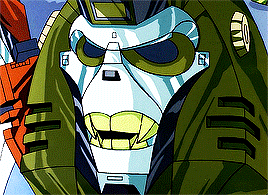
Japanese media would offer an explanation of sorts, in the Controverse manga.
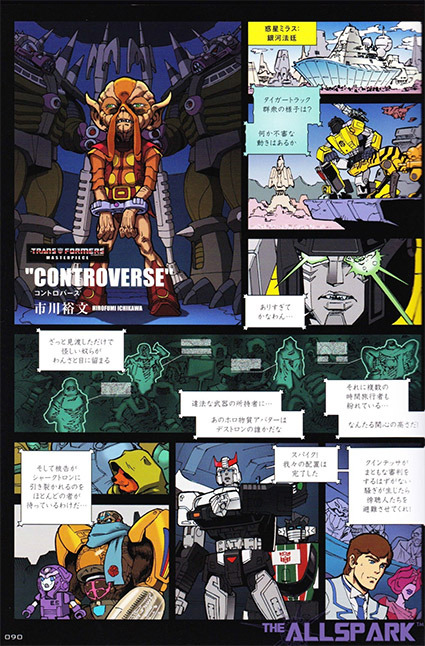
In this story Primacron, the ancient sea monkey alien that created Unicron and later Tornedron in the G1 cartoon, would stake the claim that he created ALL mechanical life. When the Quintesson Judge calls this out, Primacron calmly responds that he created mechanical bacterial life once and surmises those creatures became the Quintesson race.
Further manga would reveal this is true, and go the extra mile by revealing Primus and Primacron were ancient beings that existed in the universe prior to the Big Bang (mirroring a similar idea in the Marvel comics).

Primacron was originally Primus’ pet, but as his intellect grew, and so did his ambitions, and once the old universe died and ours was born, Primacron would enslave his former master in what would become The Matrix of Leadership, and it would grant life to his mechanical creations, the Beast Mode Primitives, the Quintessons and Unicron.

It would appear most modern media opts go instead cast the Quintessons as organic creatures, created by Quintus Prime’s Emberstone, that pilot mechanical suits.


Cyberverse’s take on the Judges also goes an extra mile, similar to Primacron, revealing that these Quintessons are born by fusing five distinct lifeforms together, all chosen to judge a universe accordingly. This is depicted by using Starscream as the dominant component….

But unlike the wholly mechanical Judge seen before, Starscream’s Judge form has organic components, with other organic races in the Greys and Velgrox.
While there’s an argument the G1 Quints might be biomechanical, it’s never been clearly defined with Cyberverse Quint Starscream more plainly leaning in that direction.
As for the organic technology present among the TFONE Quints, that potentially has two origins.
The more famous one are the Trans-Organics, the prototype race the Quintessons developed before making the Consumer Goods and Military Hardware robots that would become The Transformers.

A cyborg like race of primitive animals, they were unable to accomplish basic tasks, and gave into their beast like savagery, destroying several Quints before they were sealed away deep within Cybertron.
In the modern era, a group of Quintessons opted to free their ancient beasts of burden, tricking Galvatron into unleashing them so that the Trans-Organics may destroy the Transformers, allowing the Quints to reclaim Cybertron. Inevitability this fails, with the Quints done in by the Dweller beast, an energy vampire worm Trans-Organic.

The Dweller is the most famous one, and spawned other counterparts seen in Cyberverse and EarthSpark, with the EarthSpark versions being a race native to Quintessa, typing it back to its origins.


The second inspiration, if potentially coincidental, could be GI Joe’s Cobra-La.
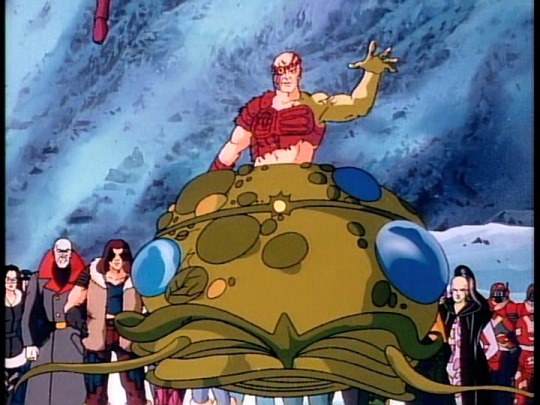
The GI Joe movie would reveal Cobra had its origins in Cobra-La, an ancient race of snake people that were the original dominant species of Earth before us mammalian humans evolved.
Cobra Commander is native to Cobra-La, originally being a snake man scientist who became mutated in a lab accident before becoming leader of the snake themed terrorist organization that’d slither into America.
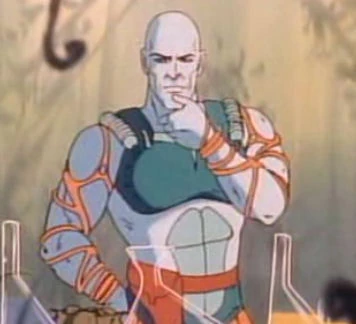
He’s further mutated as punishment for his failure in taking over the world in Cobra-La’s name, slow mutating into a cobra.

While the DiC sequel series would see him restored, albeit still as a mutant snake man.

Presumably CC’s still a snake dude when he briefly menaces in the G1 Movie era Autobots as Old Snake.

Anyhow, the relevance to the Cobra-Laians and Quintessons, is the former use organic based technology. Basically, this means they create specially developed animals to use in place of tools, bridges & vehicles.




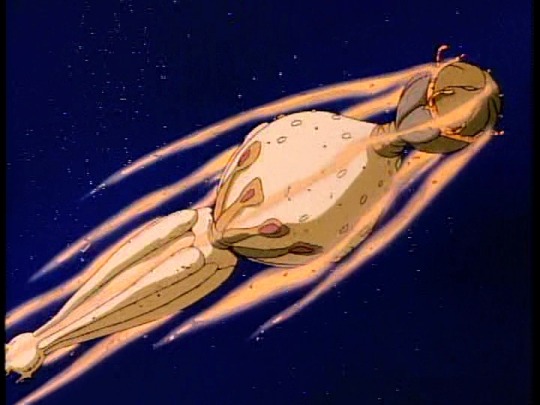
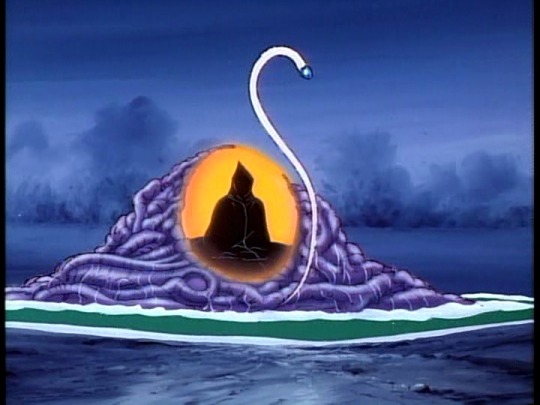

@bogleech’s own post on Cobra-La discusses other examples of their technology: https://bogleech.com/cobrala
In the GI Joe film, the Cobra-La people are disgusted by humanity’s use of inorganic machinery, and opt to eradicate humans and reclaim the land that was theirs prior to the Ice Age.
In the Energon Universe, this prejudice exists still for humans, as Cobra Commander is instead a human that lives in their ranks, but they’re more offended by the existence of the Transformers after CC’s science team dug out a frozen Megatron to study him.
Aghast at a cold, mechanical planet populated by giant metallic robots, Cobra-La sends Pythona aboard a space fairing … whatever this fella is…
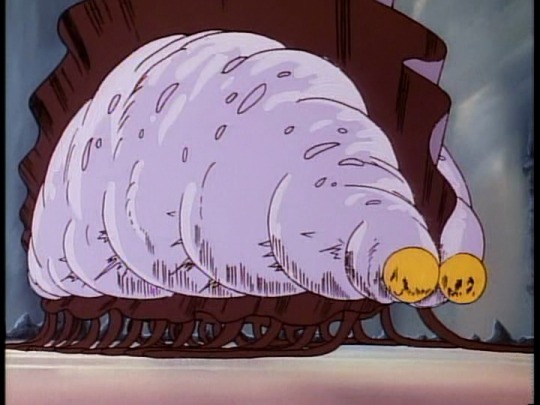
… to Cybertron to nip this so called invasion in the bud.
It would appear she takes a semi unintentional detour, dealing with matters in the Void Rivals series first, where she’s set to battle the Skuxxoid in particular. (I’d laugh if she became the wife he constantly talks about.)

The Quints and Cobra-La sharing the concept of organic technology is honestly very interesting, and while I do think it was created independently of GI Joe, should more TFONE content be made and the Transformers and Quintessons go to Earth, a further connection to Cobra-La would be really cool.
It’s theorized in the Energon Universe that the Quintessons could’ve created or at least influenced the Cobra-La people, and such an idea isn’t unheard of, as the Zertonians and Agorrians of Void Rivals are revealed to be descendants of Transformers via a new character called Zerta Trion. It’s implied but not yet totally confirmed the Quintessons created the Transformers also via the G1 cartoon as well, and I just think it’d be hilarious if the proud, organic Cobra-La people would discover they’re related to the fully mechanical Transformers via the Quintessons and be utterly mortified. (I don’t think they’d like their Zertonian/Agorrian cousins much either since, despite being organic they have technology based Energon ports on their heads.)
Incidentally it feeds into a personal headcanon regarding EarthSpark, since MARS Industries exists here, that Quintus Prime used the Emberstone to seed life on Earth that would one day evolve into Cobra-La, making them relatives to the Terrans, Quintessons, and Lithonians (the later because Quintus reminds me of Kranix for some reason).
#blueike productions#blueike#transformers#maccadam#energon universe#gi joe#void rivals#transformers one spoilers#transformers one#transformers earthspark#cobra la#cobra commander
157 notes
·
View notes
Text
"Just as 'most prisoners walk into prison because they know they will be dragged or beaten into prison if they do not walk,' we can say that most of the psychiatrically committed walk into hospitals because they know they will be restrained or dragged in if they don't walk. Often, this power has not required the psychiatrist to know the exact source of the ailment they treat nor exactly how their methods act upon the mind; what matters is that the machine is running. A whole system, a tightly interwoven mesh of relays and discourses is in place to transform the psychiatrist's judgment into effective action: a working theory and classificatory system to organize the clientele and separate them from other objects of care or punishment (taxonomy or nosology); institutional spaces (the asylum is historically the most pervasive, but also clinics, group homes, psychiatric wards, etc.); judicial codes defining the status of the mad (generally analogized to animals or children); prescribed roles for legal actors (police, judges, forensic experts); a chain of bureaucrats to sort out matters of insurance, finance, and property in cases of institutionalization or guardianship; and approved mechanisms or surveillance and reporting to translate individual complaints into the state's administrative codes. There are as many points of contact as there are spaces of encounter and discourses of legitimation in the social world. One or more of these elements can be revolutionized without fundamentally changing the connection between the parts. For example, at various points throughout its existence, as we've already seen, a theory of 'social causation' prevailed over a biological one without changing the matrix that defines modern psychiatry, and the same can be said for some of the legal alterations to the patient's status throughout the twentieth century.
There is no psychiatrist-patient encounter set apart from a broader circuit of relations: patient-apartment-work-family-cop-partner-school-neighbor-psychologist-state-guardian-probate-judge-psychiatrist-hospital. And to be clear: our biology itself is shared and leaks throughout this chain at every step. Our bodies are permeable, open, they leak, bleed, consume, excrete; our bodies flow out into a common world, and are open to outside influence, as the COVID-19 pandemic has made so excruciatingly clear. A patient of the Utica Asylum put it beautifully in The Opal in 1852: 'Like fermentation in the chemical world, [humanity's] atomic adhesions are in constant enlargement and in silent operation, seeking out relations, and forming relations of unsurpassed beauty and comfort, because in conformity with nature and adapted to its condition, means and end.' Attempts to neutralize this network by relegating every actor and space in the chain external to the domain of the psychiatrist onto the order of natural history ('we're just responding to the demands of the family...' or 'that's a matter for the police...I just deal with the patient once they arrive here') expose this posture as a naively religious one. In denial of the profane world and its complications extrinsic to the holy circuitry of neural or endocrine highways of the One in isolation, they declare a monastic fealty to an object of study over and above the matrix that makes its study possible or their conclusions efficacious in any real encounter...
...If psychiatry still takes refuge in the desert of scientism--speaking in tongues of prolix jargon--it's because a paradise of healing did materialize, but not as a Promethean forge of liberated humans, nor even as solemn resting place of broken souls, but sank so low as to appear as nothing more than a mundane prison. Burdened by the unbearable weight of their failure, the next generation abandoned their project and ran away to the labs, relinquishing responsibility for the armies of the living dead. At least they hung a sign at the door of the asylum on their way out. It read: 'abandon every hope, who enter here.'"
-Storming Bedlam: Madness, Utopia, and Revolt by Sasha Warren, pg 32-34
#personal#psych abolition#antipsych#antipsychiatry#book quotes#sasha's book has so much talented research and beautiful writing
64 notes
·
View notes
Text

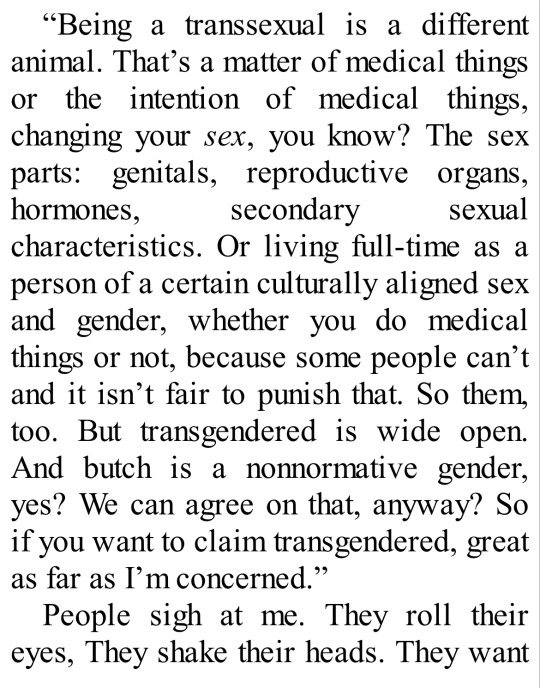

""You cannot piss in a cup or pull a sword from a stone or anything else in order to tell if you're trans or not. You are if you want to be. You're not if you don't."
This is what I say. No one listens.
"Look. I define transgendered literally; it's a way of crossing. Crossing into a different gender. Not the opposite, there are so many, just a different one. Or crossing out of the gender that theoretically goes, in that there heterosexual matrix we keep talking about, with your biological sex.
"Being a transsexual is a different animal. That's a matter of medical things or the intention of medical things, changing your sex you know? The sex parts: genitals, reproductive organs, hormones, secondary sexual characteristics. Or living full-time as a person of a certain culturally aligned sex and gender, whether you do medical things or not, because some people can't and it isn't fair to punish that. So them, too. But transgendered is wide open. And butch is a nonnormative gender yes? We can agree on that, anyway? So if you want to claim transgendered, great as far as I'm concerned."
People sign at me. They roll their eyes, They shake their heads. They want me to make ruling, they want me to tell them if they can call themselves transgendered, or alternative if they can still call themselves butch. As though I somehow have the power to confer or deny whatever label they want, or as though I can be relied upon to make an impartial decision int he case of an argument, whether it is internal or among individuals."
"Border Wars” Butch is a Noun essays by S. Bear Bergman (2006)
#butch is a noun#s. bear bergman#butch#lesbian#transgender#transmasculine#transmasculinity#lesbian lit#butch lit#trans lit#transgender lit#lgbt#lgbtq+#queer lit
1K notes
·
View notes
Text
Primal experience takes place, as it were, within a world soul, an anima mundi, a living matrix of embodied meaning. The human psyche is embedded within a world psyche in which it complexly participates and by which it is continuously defined. The workings of that anima mundi, in all its flux and diversity, are articulated through a language that is mythic and numinous. Because the world is understood as speaking a symbolic language, direct communication of meaning and purpose from world to human can occur. The many particulars of the empirical world are all endowed with symbolic, archetypal significance, and that significance flows between inner and outer, between self and world. In this relatively undifferentiated state of consciousness, human beings perceive themselves as directly—emotionally, mystically, consequentially—participating in and communicating with the interior life of the natural world and cosmos. To be more precise, this participation mystique involves a complex sense of direct inner participation not only of human beings in the world but also of human beings in the divine powers, through ritual, and of divine powers in the world, by virtue of their immanent and transformative presence. The participation is multi-directional and multidimensional, pervasive and encompassing.
Richard Tarnas, Cosmos and Psyche
54 notes
·
View notes
Text
My favorite thing in math is equivalent conditions. Give me a thousand ways to say the same thing please. "Two numbers are coprime if and only if their least common multiple is equal to their product", and "A matrix is invertible iff its kernel has a cardinality of 1" sound so wrong because that's not at all how those two things are defined but they are also provably true.
I got so much extra credit on a linear algebra test once for being able to name almost every equivalent condition of invertability of a matrix we learned over the semester.
145 notes
·
View notes